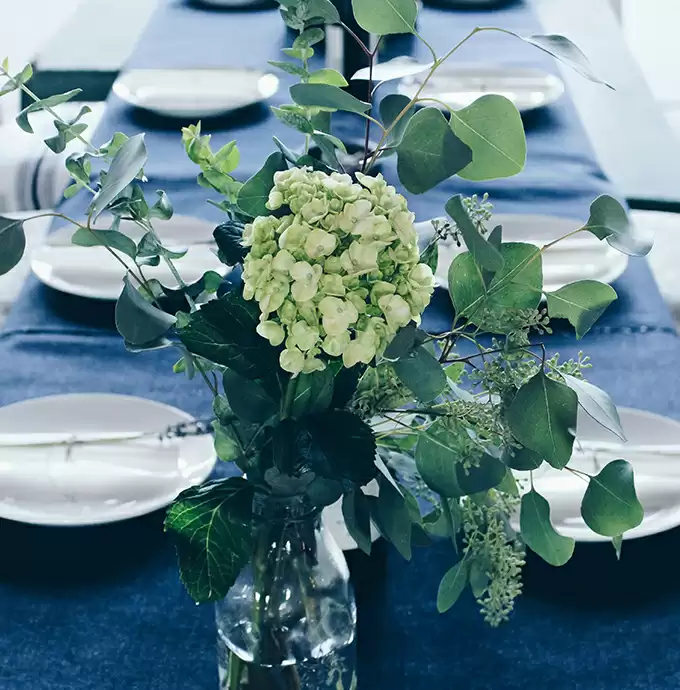Create an engaging layout for your next WordPress project!
Original design breakdown
The initial design showcases a captivating two-column layout, ideal for attracting viewers and presenting information effectively. On the left, you’ll find engaging textual elements, while the right column presents a grid of four images, organized into two rows. This dynamic arrangement not only provides informative content but also enhances visual appeal, making it perfect for holiday themes or promotional offers on your WordPress website.
Detailed analysis
Layout analysis
- Overall structure: The strategic two-column format creates a modern and functional presentation.
- Arrangement of rows and columns: With two rows of images (two per row), the layout maintains balance while keeping viewers visually engaged.
- Asymmetrical layout choices: The slight asymmetry adds interest, guiding the eye across the page seamlessly.
Element and feature description
- Visible elements:
- Headers: An inviting primary header, “For your dream holiday,” complete with three-star icons that signal quality.
- Text blocks: Descriptive text enhances the viewer’s understanding of offerings.
- Images: Each of the four images draws attention with themes related to holiday experiences.
- Interactive elements: A prominent call-to-action button, “view our location,” creates an interactive experience for users.
- Typography: Bold headlines capture attention, while standard, easy-to-read body text ensures clarity and accessibility.
- Icons or graphical elements: The star rating before the header punctuates the design with a touch of sophistication.
- Images: Uniformly cropped images with rounded corners lend a modern aesthetic.
Unique design aspects
- Standout design choices: Combining text and imagery effectively engages viewers while delivering information.
- Hover effects or animations: While hover effects are not detailed, interactive elements suggest potential dynamic features.
- Responsive design features: The adaptable layout ensures a seamless viewing experience across devices.
- Accessibility considerations: High contrast and clear typography enhance readability for all audiences.
Overall design style
- Design style category: The minimalist and inviting style emphasizes clean lines and allows the content to shine.
- Visual hierarchy: The design guides the viewer’s focus from the header to the text and finally the images, facilitating effortless navigation.
- Use of white space: Generous white space around elements creates balance, enhancing the overall viewer experience and preventing clutter.
10 ways to organise content in WordPress
1. Custom post types
Custom post types allow you to create content that isn’t a typical post or page. They offer flexibility, especially when you’re showcasing projects, products, or reviews. With custom post types, you can categorise your content distinctively, making your WordPress website more tailored to your specific needs. They provide a structured way to organise varied content types, aiding in better site navigation and enhancing user experience.
2. Categories and tags
Categories and tags are fundamental to organising your content within WordPress. Categories serve as broad groupings, while tags are more specific, helping your audience find related content effortlessly. When combined, these tools improve your site’s searchability and enable visitors to discover more of what interests them, fostering deeper engagement.
3. Pages and subpages
Using pages and subpages allows you to create a structured hierarchy within your site. This is particularly useful for static content like “About us” or “Services,” helping users navigate logically. Subpages can serve as detailed extensions of main pages, offering more in-depth information without overwhelming site structure.
4. WordPress patterns
WordPress patterns offer a pre-designed collection of blocks that you can insert into your pages or posts. They’re perfect for enhancing layout consistency across your site. These patterns are reusable and can boost your site’s visual appeal by maintaining a cohesive design throughout various sections.
5. Menus
Utilising menus within WordPress allows for enhanced organisation and navigation. You can create custom menu structures, featuring categories, pages, and even links, providing users with a seamless browsing experience. Properly designed menus guide users and can highlight important sections or content on your site.
6. Widgets
Widgets are versatile tools for adding various functionalities to your site’s sidebar or footer, such as recent posts, search bars, or social media links. They enhance user interaction and can be a strategic place for important announcements or contact information, enriching your site’s overall utility.
7. Block templates
Block templates aid in creating consistent layouts for different types of content. These can be modified as needed, ensuring uniformity in design while conserving time. By utilising block templates, you maintain visual coherence, which is pivotal for brand consistency and user experience.
8. Shortcodes
Shortcodes in WordPress provide a quick way to add dynamic content like galleries or forms into your pages and posts. By embedding shortcodes, you simplify complex code execution, helping maintain a cleaner and more organised site structure without deepening your site’s codebase complexity.
9. Pagination
Using pagination improves navigation and reduces page load time by breaking content into manageable sections. Visitors appreciate quicker load times and can easily navigate from one section to another, which enhances user experience, especially on content-heavy sites or blogs.
10. Content scheduling
Content scheduling allows you to time your posts for maximum impact, releasing them when your audience is most active. This ensures consistent engagement and keeps your site regularly updated without manual intervention, fostering a dynamic and timely content flow.
10 different types of content in WordPress
1. Blog posts
The backbone of countless WordPress websites, blog posts help businesses and individuals share fresh ideas, stories, or updates. They build community and encourage interaction through comments and sharing, establishing an ongoing dialogue between you and your audience.
2. Portfolios
Portfolios enable creatives to showcase their works exquisitely. With tools like page builders or gallery plugins, you can craft visually compelling displays that highlight your skills and projects, engaging potential clients or employers via captivating presentations.
3. Product pages
Product pages are crucial for e-commerce sites. They allow you to present offerings with descriptions, prices, and images. Effective product pages convert browsing into sales by providing comprehensive details in an engaging format, encouraging customers to make informed purchasing decisions.
4. Photo galleries
Photo galleries offer a vibrant way to showcase images, whether for personal collections or brand visual stories. By implementing galleries, you can create a visually immersive experience that attracts viewers and highlights products, services, or memorable event captures beautifully.
5. Testimonial showcases
Testimonial showcases provide proof of satisfaction from past clients or customers. Displaying testimonials on your site builds trust and credibility, offering potential clients an insight into your reliability and quality, vital for converting interest into action in visitor decision-making.
6. Video content
Video content is an engaging medium that enhances storytelling or demonstrations. By creating videos, businesses can showcase products, educate audiences, or share stories compellingly, reaching diverse audiences while enriching overall site engagement and attracting longer visitor stays.
7. Podcasts
Podcasts are a growing medium to share stories, interviews, or topics of interest. They allow creators to connect with audiences through audio content, expanding reach beyond those who prefer reading, and fostering a personal connection through voice, with loyal listener bases over time.
8. Infographics
Infographics synthesise data and information visually, making complex details digestible. They captivate audiences with compelling layouts that enhance understanding and memorability, especially effective for tech or educational sites that rely on data-driven content to engage visitors.
9. Interactive content
Quizzes, polls, or surveys as interactive content invite user engagement and provide valuable data feedback. Catering to audience activity, interactive content forms deeper connections and offers insights into preferences, enhancing user experience while guiding content strategies.
10. E-books
E-books as digital products or free downloads incentivise engagement by providing valuable information. They’re effective for building email lists or establishing authority in a field, showcasing expertise while rewarding visitors with substantial, informative material positively impacting retention.
Conclusion
This visually appealing design marries minimalist aesthetics with functionality, making it a perfect template for any WordPress user looking to create an engaging layout. With a two-column setup that elegantly presents text and imagery, this design not only captures attention but also promotes a memorable holiday experience. Utilize this approach for your next project, and watch your audience engagement soar! For more insights, explore WordPress website design or discover free WordPress themes as a starting point. Additionally, if you’re searching for Elementor Alternatives to enhance site capabilities, explore the multitude of options tailored to various design needs.







